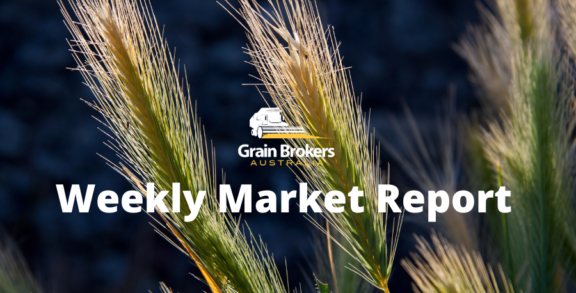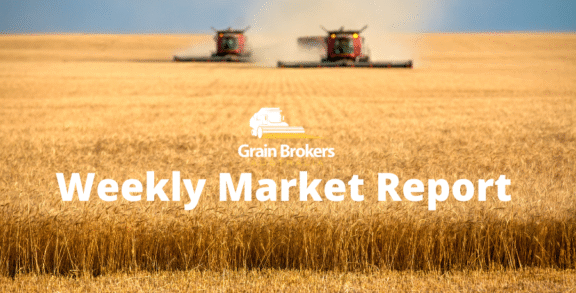The soybean production cuts keep coming in South America (SAM), as a relatively mild La Niña event has a huge impact on the yield outlook in Brazil, Paraguay and Argentina. This has seen China turn to the United States for its soybean shopping and pushed Chicago soybean futures up for the fourth consecutive week.
South America’s upcoming harvest is vital to replenishing tight global soybean supplies. But a second consecutive year of below-average rainfall across the southern half of the continent means yields in key production regions are headed for substantial falls relative to long term averages.
During a La Niña event, climatic conditions in South America favour higher than average rainfall across northern Brazil and below-average rainfall for southern Brazil, Paraguay and Argentina. And that is the exact scenario playing out so far this year.
The drought that slashed last year’s safrinha corn production in southern Brazil has extended into 2022, and the drought-affected area in Argentina has expanded dramatically in the past few months. In Paraguay, lack of rain in December and January has decimated this season’s soybean output by as much as 50 per cent.
Soybean production estimates were cut in last Wednesday’s update to the World Agricultural Supply and Demand Estimates. However, if forecasts by some South American based analysts are to be believed – they are closer to the action – then the USDA has some way to go.
The agency lowered its production estimate for Brazil, the world’s biggest producer and exporter, by another five million metric tonne to 134MMT in last week’s update, putting production 2.9 per cent lower than last year. That is a cumulative decrease of 10MMT in the past two months after slashing the same quantity off its forecast in January.
The very next day, Brazil’s national agricultural agency Conab informed the market that it expected Brazil to harvest the smallest soybean crop in three years, slashing its production forecast by 15MMT. It now forecasts the country’s farmers to reap 125.5MMT after optimistically predicting a record 140.5MMT crop in January. But like the USDA, Conab has a reputation for being conservative, so a cut of this magnitude does not augur well for final production.
Late in January, AgRural, was one of the first forecasters to go sub 130MMT, trimming its crop outlook to 128.5MMT. This was down from a previous forecast of 133.4 MMT and much lower than its original projection of a record 144.7MMT. The trend is very similar to that of AgResource, which originally expected 141MMT, before cuts to 131MMT in early January and then to 125MMT in late January.
Local agricultural consultancy Safras & Mercado cut its 2021/22 soybean production estimate on Friday to round out a trifecta of crop downgrades for the week. Citing the extremely dry weather in southern Brazil, it is now calling the crop 127.1MMT, 5MMT lower than its previous forecast. While higher production in the northern states is partially offsetting losses in the south, the extent of the problem became evident when harvest commenced in Parana and Mato Grosso do Sul, according to the forecaster.
In Paraguay, the situation is dire. Paraguay is the world’s fourth-biggest exporter of soybeans, but the flow into the international market will be pretty slow in the 2021/22 marketing year, with drought destroying crops and drastically reducing production. The USDA cut its crop forecast from 8.5MMT to 6.3MMT in last week’s WASDE update.
However, there are reports of corporate farms that expect to harvest less than half of their initial projections. Yields in some areas are as low as one metric tonne per hectare against a long-term average of 2.8MT/ha. This led to the country’s minister for agriculture and livestock suggesting the crop could be as low as 5MMT this season, compared to almost 10MMT last year.
In its February update, the USDA also clipped Argentina’s soybean crop, taking 1.5MMT out of global supply to land at 45MMT. The Rosario Grains Exchange was far more ruthless in its production cut, comparing the crop outlook to that of the 2018 disaster when production was only 38MMT. While not down to that level just yet, if the dry weather forecast for the rest of this month comes to fruition, further cuts to its 40.5MMT estimate are possible. The Buenos Aires Grain Exchange sits in the middle after lowering its forecast by 2MMT to 42MMT 10 days ago.
Meanwhile, China has been busy booking new crop soybeans out of the United States, with January sales as high as 1.9MMT. While this is down from a record 3MMT last year, it is well above average for the period. They have been chipping away in the old crop market as well, snapping up cargoes here and there, but that is expected to change, with the South American woes almost guaranteeing China will have to turn to the US to satisfy some old crop demand.
The diminishing soybean outlook in South America has ignited Chicago soybean futures. The March 2022 contract traded higher on Friday to close the week at US$15.83 per bushel (AU$815/MT). That was the culmination of a four-week run that has seen the price rise 15.6 per cent from a close of US$13.69¾/bu (AU$705/MT) on January 14. The market has closed higher on 15 occasions in that period, but there have only been four down sessions.
The high soybean prices will certainly ration global demand. The USDA took 3MMT out of China’s 2021/22 soybean imports in last week’s WASDE update. However, that is dwarfed by the 18.2MMT it has wiped off South American production in the January and February reports. The yield issues in South America will push the global carryout significantly lower year on year. How low will depend on the consumer reaction to the rallying market?
Call your local Grain Brokers Australia representative on 1300 946 544 to discuss your grain marketing needs.





